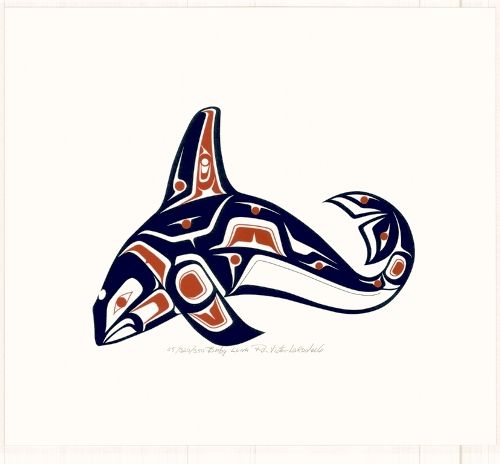I’ve never thought about using children’s stories as starting points for high school and middle school lesson plans but Kathy Neilson really showed how they can pique interest or be jumping off points of culturally relevant lessons. I picked the The Tale of an Alaska Whale which is a Tlinget story involving a man who made the other hunters jealous so they stranded him on a rock in the middle of the ocean. The sea lions helped him return home and he plotted revenge against the other hunters. At first I didn’t see how it could be tied to science but Mrs. Neilson showed me how this man in plotting revenge, is conducting an experiment. His experiment involves carving a killer whale from different types of trees. First he tries alder and it is too heavy and didn’t float well. Then he tried Red Cedar and it floated too much. Then he tried yellow cedar and it was perfect. The yellow cedar killer whale then proceeded to kill all the hunters who had wronged him. This experiment could be replicated with the cooperation of a shop class and maybe a local elder or artist to explore the properties of different types of wood. I love the idea of using children’s books and I will be on the look out for books I can use and how to use them in my class.
Blackerby, A.W. and Linn A. Forrest. Tale of an Alaska Whale. Portland. Binford &Mort. 1955.

I’m liking the creativity that is used here to turn a revenge plot into a density experiment. This imaginative lesson creation exercise will be fun to develop for future implementation in the classroom
Meghan,
I like your writing style. But anyway, I had a hard time figuring out how picture books would relate to science or math if they were written for culture and such. I like that you mention the experimenting that the protagonist underwent. That is something that science teachers would have to look at closely to relate to a lesson plan. Tying in a children’s book to experimentation seems like a loose link and perfect for elementary children. When it comes to secondary education, this connection of “they are experimenting” doesn’t seem to spark that much.
You mention an exercise, and I could see it taking a few minutes, or a lesson based around creating scientific children stories. Either way, I’m glad I don’t have to worry about tying children’s stories together with science!
Thank you,
Mason Shearer